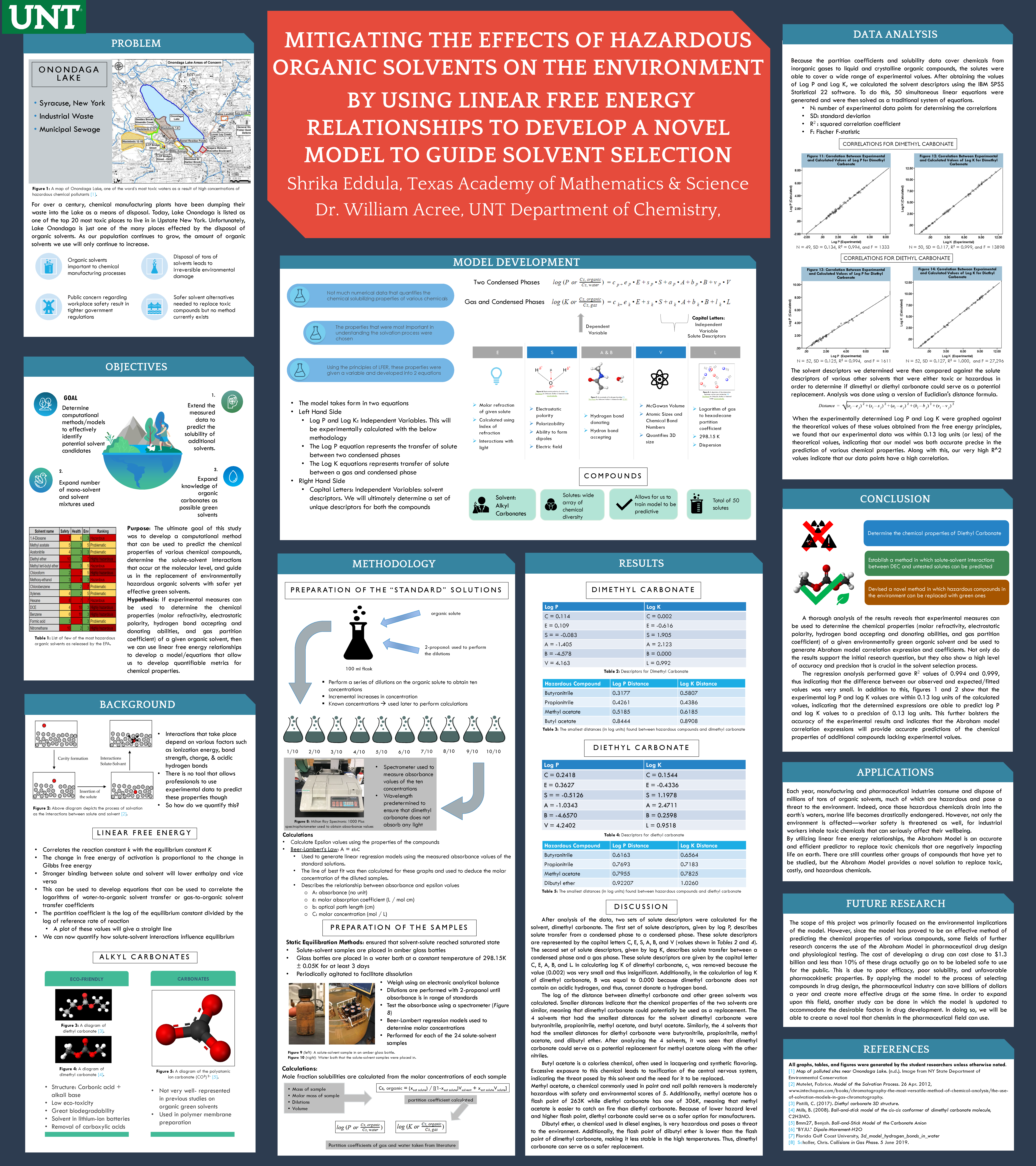First Name:
ShrikaLast Name:
EddulaMentor:
Dr. William AcreeAbstract:
Each day, the chemical industry uses over a million metric tons of organic solvents in the manufacturing process. Unfortunately, many of these organic compounds have been proven to be toxic, costly, or hazardous and end up finding their way into the environment through means such as accidental spills and underground leakage from sewage systems, bringing about irreversible damage to aquatic organisms and industrial workers. Thus, this study was broken down into two phases. Phase 1 involved developing a novel model that quantifies the chemical properties of any given compound. To do so, a linear free energy relationship proposed by Dr. Michael Abraham in which one correlates the reaction constant, k, with the equilibrium constant, K, was utilized. Phase 2 involved investigating the chemical properties of a group of “green” solvents that have yet to be investigated: alkyl carbonates. Specifically, this study focused on diethyl carbonate and dimethyl carbonate. Experimental measures in which the absorbances of statically equilibrated samples consisting of an alkyl carbonate and 50 other solutes that expressed a wide array of chemical diversity. Using the Beer-Lambert Law and the principles of linear free energy, quantifiable solvent descriptors were determined for both alkyl carbonates with the aide of the IBM SPSS Statistical 22 software. These solvent descriptors were then compared against the descriptors of various other solvents that were declared either toxic or hazardous by the EPA using a version of Euclidian’s distance formula. In doing so, it was concluded that the 2 alkyl carbonates would be safer yet effective replacements for various hazardous nitriles and acetates. In conclusion, a computational metric was determined that will save chemical industries extensive amounts of time and money as they will no longer have to experimentally test various compounds as safer potential chemical replacements.
Poster:





